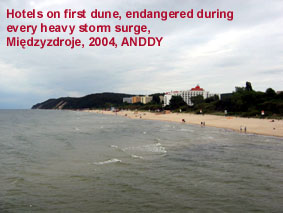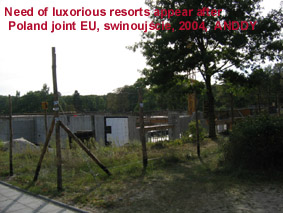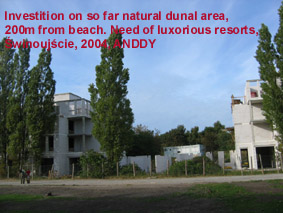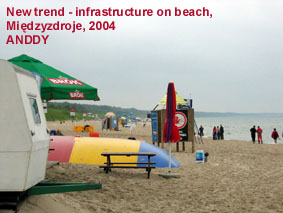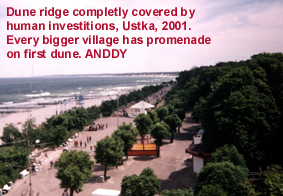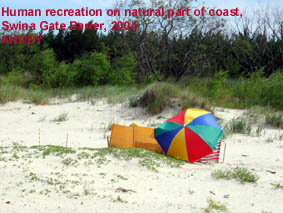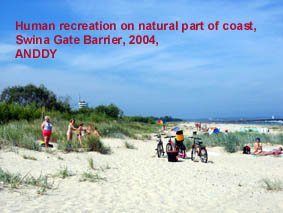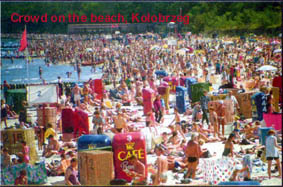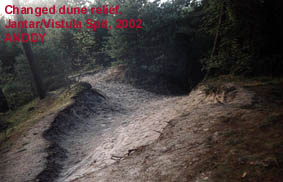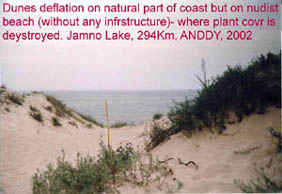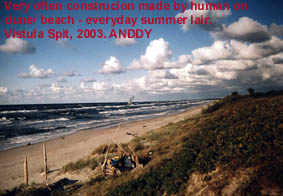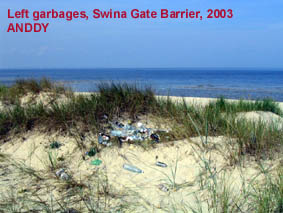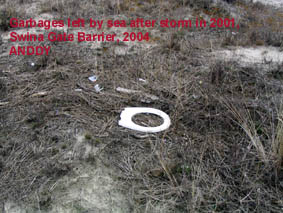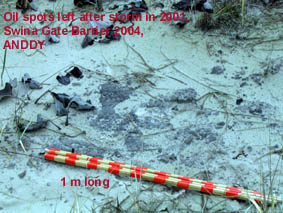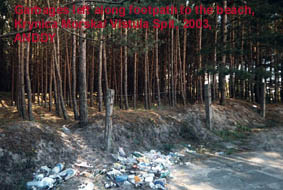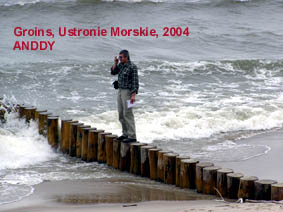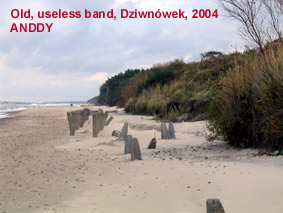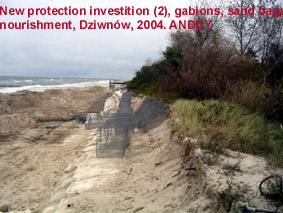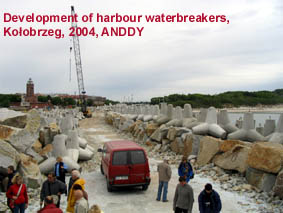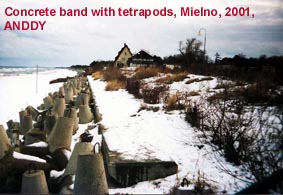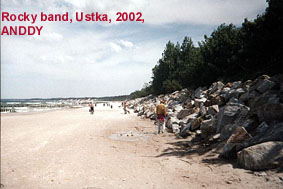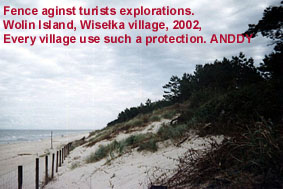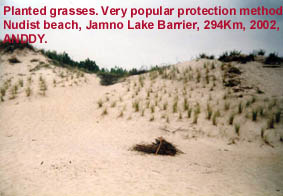P O L I S H D U N E S |

|
|
Human impact Anthropopresion, called also human impact is one of the biggest factor, that is influencing on coastal dunes. Among the human impact, Nordstrom (2000) has mentioned overgrazing, deforestation, dune stabilisation, navigation improvements, water regulations, coast protection, tourism growth. Overgrazing and deforestation of the coastal areas may lead to dune mobilisation (Nordstrom 2000) in other hand dune stabilisation by vegetation planting causes alien species spreading. Increasing of tourism, settlement causes activities of coast protection by sea walls, groins, dykes, nourishment, vegetation planting etc. Settlement, tourism and economy development has negative impact in coastal areas, especially in dune environment (Carter 1980, Pye 1990, Isermann, Krisch 1995, Piotrowska, Gos 1995, Olsauskas 1996). Men activity also causes changes in dune relief and vegetation cover due to dune management and seaside tourism development (Carter 1980, Pye 1990, Piotrowska 1995, Olsauskas 1996 and others). The tourism industry is the world's fastest growing industry. Also it is very important part of the economic development of many regions. In places, where tourism is increasing environment is suffering from human impact and activity. Natural landscape, one of the basic human values and value for tourism is changing very rapidly. Especially in seaside villages environment and coastal landscape (greatly dunes) is changing. In coastal villages' buildings and footpaths cover dunes. The end of the settlement stages is a maturation stage when all potentially developable land has been developed as either low or high density, and levels of tourists visits have stabilised (Nordstrom 2000). Major impacts of tourism industry in coastal areas are: (i) infrastructure with hotels, transport system and garbage, (ii) recreation with human activity, and (iii) coast protection against abrasion. If coastal environment will be damaged or destroyed, tourist will not be arriving. Small value of environment is equal to smaller number of tourists and smaller incoming from tourism industry. 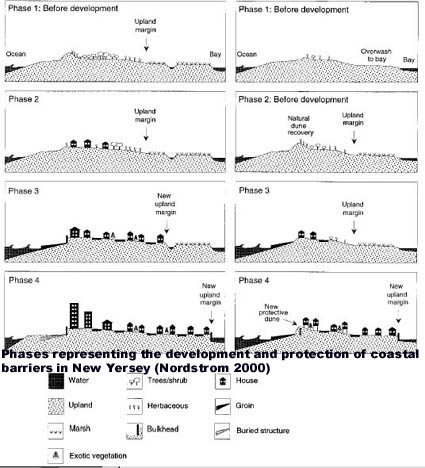 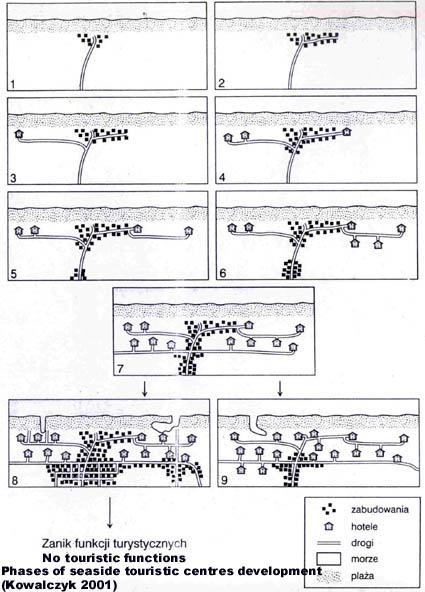 Levels of maturation vary from site to site, reflecting a combination of physical and cultural attributes, land use regulations and market demands; locations that developed prior to restrictive legislation can mature within the stage of land use intensification, whereas locations that developed more slowly may have been halted in earlier stages (Nordstrom 2000). Today when developing tourism endangers environment we should recognise people rest preferences, knowledge and lifestyle to protect and properly use coastal natural values. The critical issue for planners in such matters would be the empirical question about the degree to which any proposed uses depreciate the resource. Since the basis of our principle is a respect for the values of others, the strategy that minimises user impact overall most respect those who argue for preservation and least respect those advocating various consumptive uses (Harman et al., 2004). A first step in promoting the improvement of the environmental situation is to make information and knowledge about it available (Behaviour and the environment... 2003). Also in present day development of Polish coastal dunes heavy storms and human activity plays main role. Most of the Polish coastal habitats including dunes are also threatened by human activities (Piotrowska 1995).  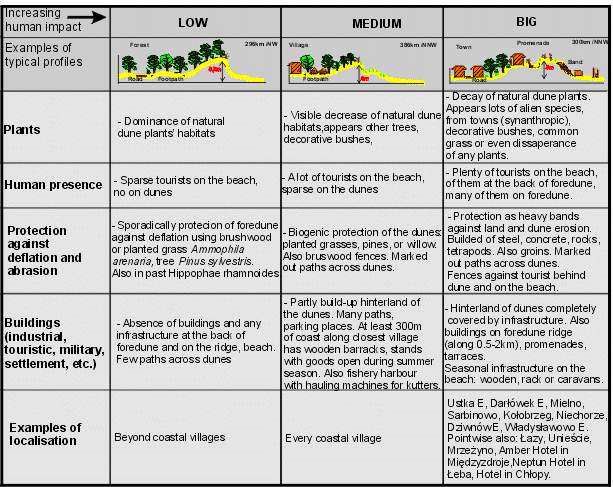 1. Seaside villages, towns development on natural dune areas, also on foredune:
2. Human presence, mass tourism:
3. Dune relief and plants changes:
4. Garbage, pollution increasing:
5. Dune, coast protection:
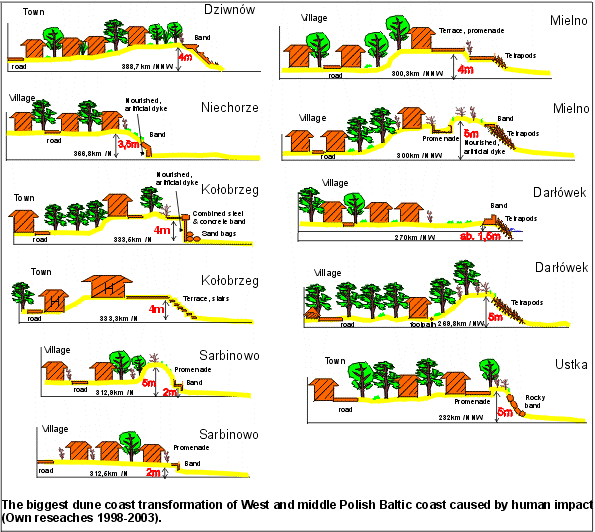 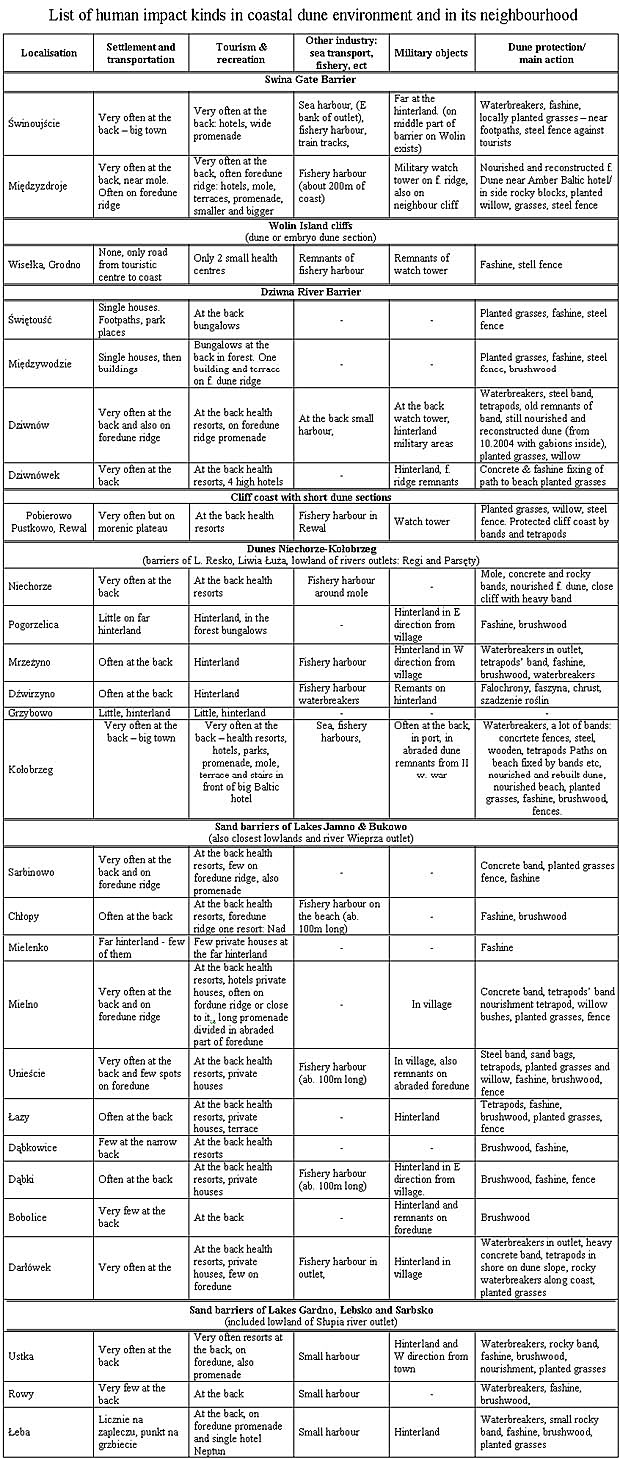 
Web page copyright Łabuz Tomasz. See also http://bramaswiny.szc.pl.
|
University of Szczecin Tomasz A. Łabuz M.Sc.
Copyright |
|||||||||||||||||||||||||||||||||
